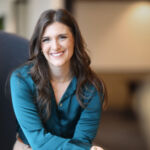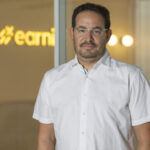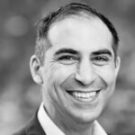A California state court jury began deliberating on Thursday in what appears to be the first trial related to a crash involving Tesla’s Autopilot partially automated driving software.
The verdict could offer an important sign of the risk facing Tesla Inc as it tests and rolls out its Autopilot and more advanced “Full Self-Driving (FSD)” system, which Chief Executive Elon Musk has touted as crucial to his company’s future, but which has drawn regulatory and legal scrutiny.
Justine Hsu, a resident of Los Angeles, sued the electric-vehicle maker in 2020, saying her Tesla Model S swerved into a curb while it was on Autopilot and then an airbag was deployed “so violently it fractured Plaintiff’s jaw, knocked out teeth, and caused nerve damage to her face.”
She alleges there are defects in the design of Autopilot and the airbag, and is seeking more than $3 million in damages for the alleged defects and other claims.
Tesla denies liability for the 2019 accident. It said in a court filing that Hsu used Autopilot on city streets, despite Tesla’s user manual warning against doing so.
Tesla calls its driver-assistant systems Autopilot or Full Self-Driving, but says the features do not make the cars autonomous, and that human drivers should be “prepared to take over at any moment.”
The EV maker introduced its Autopilot in 2015, and the first fatal accident in the United States was reported in 2016, but the case never went to trial.
The current trial, which has not been reported by other media, has unfolded in Los Angeles Superior Court over the last three weeks, and featured testimony from three Tesla engineers.
It comes at a critical time for the company as it braces for a spate of other trials starting this year related to the semi-automated driving system, which Musk has claimed is safer than human drivers.
During closing arguments on Thursday, Hsu’s attorney, Anum Arshad, said one of Tesla’s own expert witnesses admitted Autopilot could not perform as the company advertised.
“Tesla still maintains it’s the safest vehicle in the road. All it takes for you to decide this case is common sense. The car came out looking better than Justine did,” she said.
Michael Carey, an attorney for the carmaker, said Hsu drove straight into the median, which she had several seconds to see.
“The evidence proving distraction is pretty straightforward,” he said.
Bellwether Case
While the trial’s outcome will not be legally binding in other cases, it is considered a test case because it would serve as a bellwether to help Tesla and other plaintiffs’ lawyers hone their strategies, experts say.
Cassandra Burke Robertson, a professor at the Case Western Reserve University School of Law who has studied self-driving car liability, said early cases “give an indication of how later cases are likely to go.”
Tesla is also under investigation by the U.S. Justice Department and the National Highway Traffic Safety Administration over its claims about self-driving capabilities and the safety of the technology, respectively.
The main question in Autopilot cases is who is responsible for an accident while a car was in driver-assistant Autopilot mode – a human driver, the machine, or both? Hsu’s lawsuit alleges that the Tesla vehicle hit the curb so suddenly that she had no time to avoid it even though she had her hands on the steering wheel and was alert.
Reuters was first to report that a 2016 video used by Tesla to promote its self-driving technology was actually staged, to show capabilities – such as stopping at a red light and accelerating at a green light – that the system did not have, according to testimony by a senior engineer.
The details about the video were from a deposition of a Tesla executive in another case.
That executive, Ashok Elluswamy, director of Autopilot software at Tesla, testified during the Hsu trial last week about the videotape. During her closing argument, Hsu’s lawyer, Arshad, said Elluswamy also acknowledged that Tesla’s sensors do not always recognize when a driver’s hands are on the wheel.
Also at issue in the Hsu trial is the airbag.
The plaintiff’s lawyer said the airbag should not have deployed under these circumstances and that it was deployed with much greater force than it should have been.
A verdict for the plaintiff would likely be more significant than a Tesla win, particularly if the jury concludes Tesla defrauded Hsu, said Bryant Walker Smith, an assistant professor at the University of South Carolina School of Law.
“All of the actual or alleged issues with Autopilot, from faulty performance to driver distraction to misrepresentation, could become an order of magnitude greater with FSD,” he said. “So think of Autopilot litigation as a preview for what might be ahead.”
(Reporting by Abhirup Roy in Los Angeles and Hyunjoo Jin and Dan Levine in San FranciscoEditing by Peter Henderson and Matthew Lewis)




















 Defense Lawyer’s Perspective: Connecting Insurers, Promoting Plaintiff-Style Solidarity
Defense Lawyer’s Perspective: Connecting Insurers, Promoting Plaintiff-Style Solidarity  East Coast High-End Car Theft Ring Busted
East Coast High-End Car Theft Ring Busted  Property and Casualty Insurance Trends for 2025
Property and Casualty Insurance Trends for 2025  December 22 Predicted as Worst Day for Holiday Travel This Year
December 22 Predicted as Worst Day for Holiday Travel This Year 





